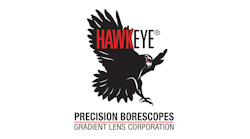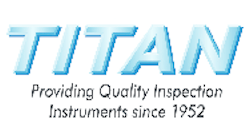Borescope Inspections For Your Piston Engine: Tips on getting the most out of this valuable tool
Tips on getting the most out of this valuable toolBy Joe Escobar
Borescopes have become a valuable tool in our nondestructive inspection inventory. However, often when we think of borescope inspections, turbine engine inspections come to mind. But borescopes can be an effective tool for piston engine maintenance. We will take a look at some applications where these tools can come in handy when performing your next piston engine inspection.
Useful Tool
Borescopes can be a useful inspection tool for piston engines. Unlike
their turbine counterparts, piston engines don't generally have regular borescope inspection requirements. But you shouldn't ignore using a borescope because it is not a requirement. If you do, you could be missing out on valuable information concerning the state of the engine you are inspecting.
Lycoming's Steve Dyer shares the value of using a borescope during your inspection. "Using a borescope is a good practice to get into. It's good to inspect your engine every 100 hours or at least once a year. It lets you see what you've got. And if the same person performs the inspection year-after-year, inspection-after-inspection, he can notice any change in appearance and alert the customer at an early stage for corrective action."
"We use borescopes to inspect piston engines here at our repair station," shares Jerome Hodge, president of Baltimore, Maryland-based AvDyne AeroServices, LLC. "We usually use a borescope when we have questionable cylinder compression readings. It helps us assess the situation and better understand what is going on in the engine."
Typically, mechanics use sound indications to determine the cause of poor compression readings. With someone holding the propeller at the weak cylinder's top dead center, and with compressed air being applied, they listen to
various areas of the engine. If air is heard coming out of the exhaust pipe area, then the cylinder's exhaust valve is not seating properly. If air is heard coming from the carburetor or intake airbox, the intake valve is the culprit. If the oil dipstick is removed and air is heard rushing out, then this is indicative of ring blow-by which could be caused by ring wear, barrel wear, scoring, or all of the ring gaps could be lined up. Hissing between the cylinder cooling fins is not good, and usually means a cracked cylinder.
Finding More
A borescope gives you an opportunity to find defects that might not otherwise be detectable by a compression check. Things like glazing or scoring of the cylinder wall. Corrosion of the cylinder can also be identified through borescope inspection. And a borescope inspection can verify (or eliminate) possible causes of low compression readings.
Tips On Borescope Use
Dyer shares some tips on using a borescope to inspect your engine. "One of the most important things is to know the power of your borescope. This is very important. Not too long ago, a guy handed me a borescope, and I used it to look into the cylinder. What I saw was a gouge in the cylinder wall that looked like the grand canyon. If a mechanic didn't know he was
looking at this apparent large defect through a 15X borescope, he might make a rash decision to remove the cylinder."
Experience Matters
Before we start discussing some of the defects that can be detected and their indication when looking in your engine, it is important to talk about experience. As with inspecting turbine engines, if you don't know what you are looking at, you can't expect to perform an effective inspection. You need to know what a good item looks like as well as a bad one.
Experience is best gained through the experience of your co-workers. They can pass on knowledge and information that can be difficult to teach in a book. Dyer explains the importance of experience. "When you are borescoping, it takes experience to know what you are looking at. This is something you are able to gain through the experience of others. That's the way I learned. A fellow mechanic showed me the ropes. He would put the borescope in the cylinder and say 'now this is glazing.' And I got to see what glazing looked like firsthand. I can describe what the defects look like to you, but until you actually see it yourself, it's hard to really understand."
Borescope Operation
Knowledge on the borescope operation makes your inspection run easier. As mentioned earlier, knowing the magnification is important. In addition, knowing how to operate the borescope and move it around to view what you need to is helpful. Dyer explains. "The other problem I see a lot of new mechanics have is trying to relate to the positioning of the borescope. You are looking straight down the borescope. But you need to figure out where your mirror is. And that can sometimes be a hard thing for first-timers to get used to - the orientation of where the defect is and trying to control the view of the borescope to get them where they want to go. So it goes back to familiarity. Being familiar with the scope itself and what you are looking at is important."
Identifying Defects
Now that I got the disclaimer on experience out of the way, we can talk about what you may see when inspecting your engine. During your inspection, you can view the piston crown and cylinder walls, and cylinder head for defects including scoring, corrosion, and cracks. You can also inspect for conditions like ring damage and evidence of excessive blow-by. Intake and exhaust valves can also be inspected. This can help verify a problem (or eliminate the possibility) without having to disassemble the cylinder. With some equipment available, pictures of the inspected items can be taken for documentation or record-keeping purposes. The sidebar on this page shows typical engine defects and their appearance during an inspection.
Other Uses of Borescopes
Although the main use of borescopes on piston engines is cylinder inspection, they can also be useful in inspecting other remote areas of your engine. Checking intakes or engine bays for FOD, for example. Some borescopes on the market today even offer ports to allow you to do dye-penetrant inspection and FOD retrieval through the tool itself.
Choosing Your Borescope
If you are in the market for a borescope, there are many factors that can come into play. For many people, money is a big factor. But there are many more borescopes on the market today than there were just a few years ago. With a little bit of research, you can find one that meets your needs and falls within your budget.
Here are a few things to consider before purchasing a borescope:
Portability. If you are going to be doing inspections in the hangar, then portability may not be a big issue. But if you are going to be inspecting aircraft on the flight line or in customer's hangars, then portability could be a big factor in your purchasing decision.
Rigid or flexible scope. Both of these scopes have their advantages and disadvantages. Which one best fits your needs depends on the type of inspections
you will be doing. If you will only be using it to inspect piston engine cylinders, then a rigid scope may easily suffice. But if you need to have a tool with more flexibility as far as applications go, then a flexible borescope may be right for you.
Fiberscope or videoscope? This is another consideration to keep in mind. For many small GA shops, an expensive videoscope can likely be overkill. But if you will use the scope for frequent inspections, then the advantages offered in some videoscopes on the market could be worth the extra cost to you. Also, keep in mind that there are products out there that can convert an existing rigid borescope or fiberscope into a videoscope by means of a simple adapter. This allows for a cost-effective way of stepping up your technology without breaking the bank.
If you are in the market for a new borescope, you may want to consider attending a trade show. Trade shows offer a unique opportunity to try all the latest products that the borescope companies have to offer. You can test their products and get your questions answered on the spot. It is a valuable advantage, especially if you are considering purchasing a high-dollar item.
This has been an introduction to borescope inspections for piston engines.
With some hands-on experience and the right tools, you can be well on your way to performing more effective piston engine inspections.
ADDITIONAL RESOURCES
For more information on borescope products and how they can help you in your engine inspection, you can contact the following companies. Company and product information is also available in the Buyers Guide section of AMTonline.com.
Borescopes-R-Us Inc.
Clarksville, TN
(931) 362-4009
www.borescopes-r-us.biz
Everest VIT Inc.
Flanders, NJ
(888) 332-3848
www.everestvit.com
FRS-Omega, Inc.
Phelan, CA
(760) 868-5812
www.frsomega.com
Gradient Lens Corporation
Rochester, NY
(800) 536-0790
www.gradientlens.com
Instrument Technology Inc.
Westfield, MA
(413) 562-3606
www.scopes.com
Karl Storz Endoscopy America Inc.
Culver City, CA
(800) 421-0837
www.karlstorz.com
Lenox Instrument
Trevose, PA
(215) 322-9990
www.lenoxinst.com
Machida Inc.
Orangeburg, NY
(845) 365-0600
www.machidascope.com
Olympus Industrial America Inc.
Orangeburg, NY
(866) 642-4725
www.olympusindustrial.com
Titan Tool Supply Co.
Buffalo, NY
(716) 873-9907
www.titantoolsupply.com








